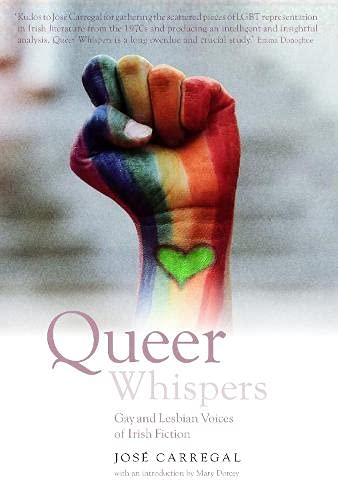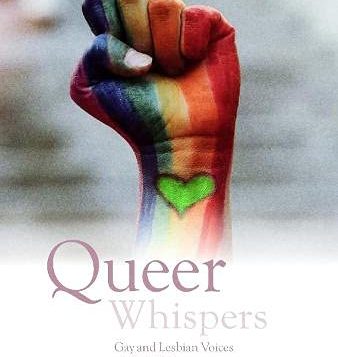 QUEER WHISPERS
QUEER WHISPERS
Gay and Lesbian Voices in Irish Fiction
by José Carregal
University College Dublin Press. 250 pages, $35.
BEFORE 1970, words like “gay,” “lesbian,” and “bisexual” virtually didn’t exist in Ireland. So states Mary Dorcey in her introduction to José Carregal’s Queer Whispers. Dorcey was one of the first openly lesbian writers in Ireland at that time, someone for whom not having a language to describe her feelings was a big problem—one that was especially acute for women, who were disempowered both economically and socially. Added to this, the heteronormative pressures of marriage, motherhood, and family life led women to retreat even more from the possibility of an alternative sexuality.
Carregal reveals how, after the 1970s, feminism and gay liberation were popularly perceived as a foreign influence and a threat to Ireland’s cultural identity. Dorcey’s short story “A Country Dance” (in A Noise from the Woodshed, 1989) examines one community’s reaction to two unaccompanied women attending a country dance together. Unable to understand their relationship, the men try to pick the women up. When the nature of their relationship becomes clear, the crowd grows increasingly hostile, particularly the men. This story points out the double challenge for the women when threatening the dominant male hierarchy and the community’s heterosexual assumptions.
For men in Ireland, there was a similar lack of information about being gay and a dearth of literature on the topic. In 1994, Keith Ridgway’s short story “Graffiti” (in Quare Fellas) explored topics such as cruising for sex in public bathrooms or “cottaging,” as well as the advent of the AIDS crisis. Early novels, such as Desmond Hogan’s groundbreaking The Ikon Maker (1979), was one of the first to explore the rural Irish gay experience prior to the 1990s. Damian McNicoll’s A Son Called Gabriel (2004) explored the internalized homophobia of a gay youth due to his Catholic upbringing, and his refusal to follow the desires of his family to enter the priesthood. Eventually, he migrates to England. However, as Colm Tóibín has remarked: “For young gay men in Ireland in the 1960s and 70s, the priesthood seemed to offer the only way out.” Tóibín’s own novel, The Blackwater Lightship (1999), was one of the first to explore the impact of HIV and AIDS in Ireland. More recently, Anne Enright’s novel, The Green Road (2016), and Hogan’s A Farewell to Prague (2013), also explored the AIDS crisis.
Gay sexuality was criminalized in Ireland until 1993, but the country has made a remarkable turnaround since then, becoming the first to legalize same-sex marriage by a popular referendum in 2015. As Carregal puts it: “In 1990, the election of Mary Robinson as President of the Irish Republic symbolised the emergence of a society that no longer defined itself as essentially Catholic and traditional.” Under Robinson, a reformist lawyer known for her work to legalize contraception in the 1970s and male homosexuality in the ’80s, Ireland has become one of the more progressive countries in the world. This has led to a spate of works by writers such as Emma Donoghue (famous for the bestseller Room) that have explored contemporary lesbian themes.
Other writers have attempted to dramatize what cultural historian Linden Peach called the “shock of what was hidden for so long.” Indeed, many have reached back, via historical fiction, to reclaim a once hidden gay and lesbian past. A good example of this is Jamie O’Neil’s novel At Swim, Two Boys (2001), which reclaims the participation of gay people in the narrative of Irish literature by imagining a same-sex love affair between two teenage boys. Similarly, Tóibín’s The Master (2004) is a reflection upon Henry James’ sexuality.
Other popular novels have explored a whole new range of modern LGBT issues, such as post-feminism, gender terminology, and class. Carregal’s survey is useful because it moves past well-known writers such as Tóibin and John Boyne (The Heart’s Invisible Furies, 2017) to include many other interesting and relevant voices. At the very least, one is sure to come away from this book with a new list of works and authors to be explored. ____________________________________________________
Dale Boyer’s book of poetry Columbus in the New World is forthcoming.






